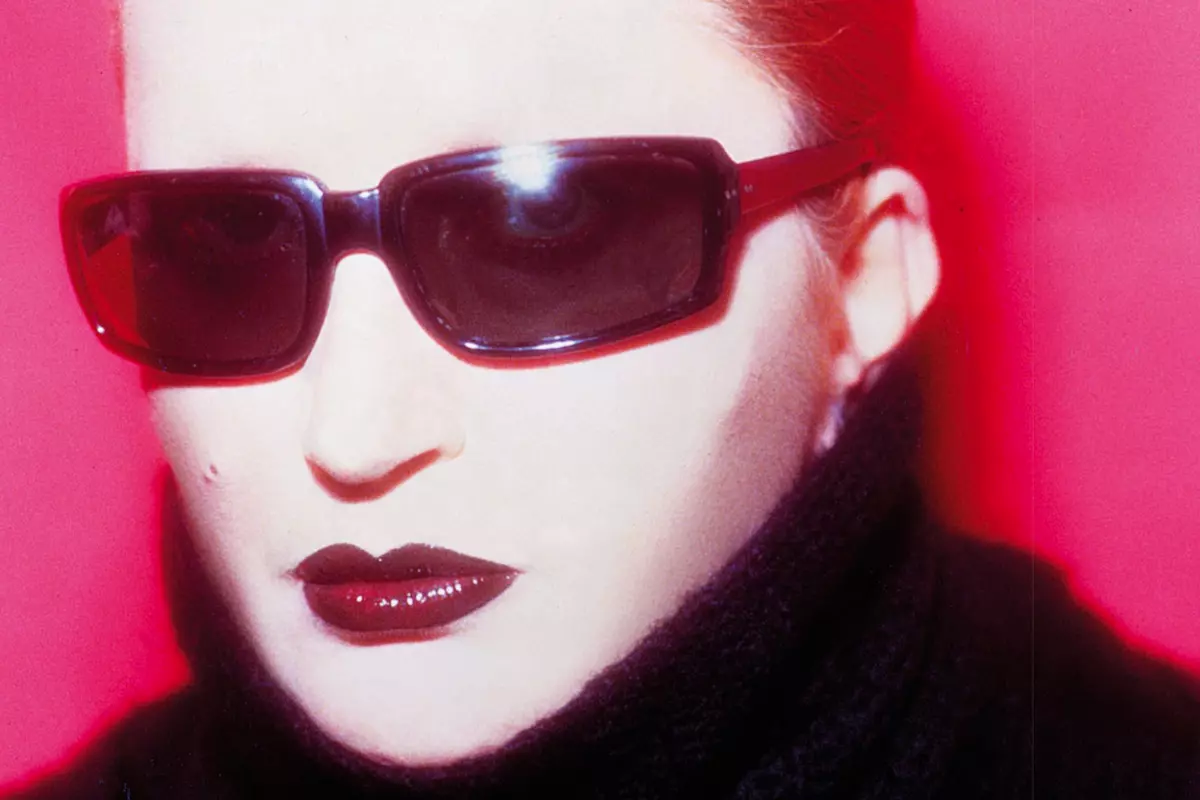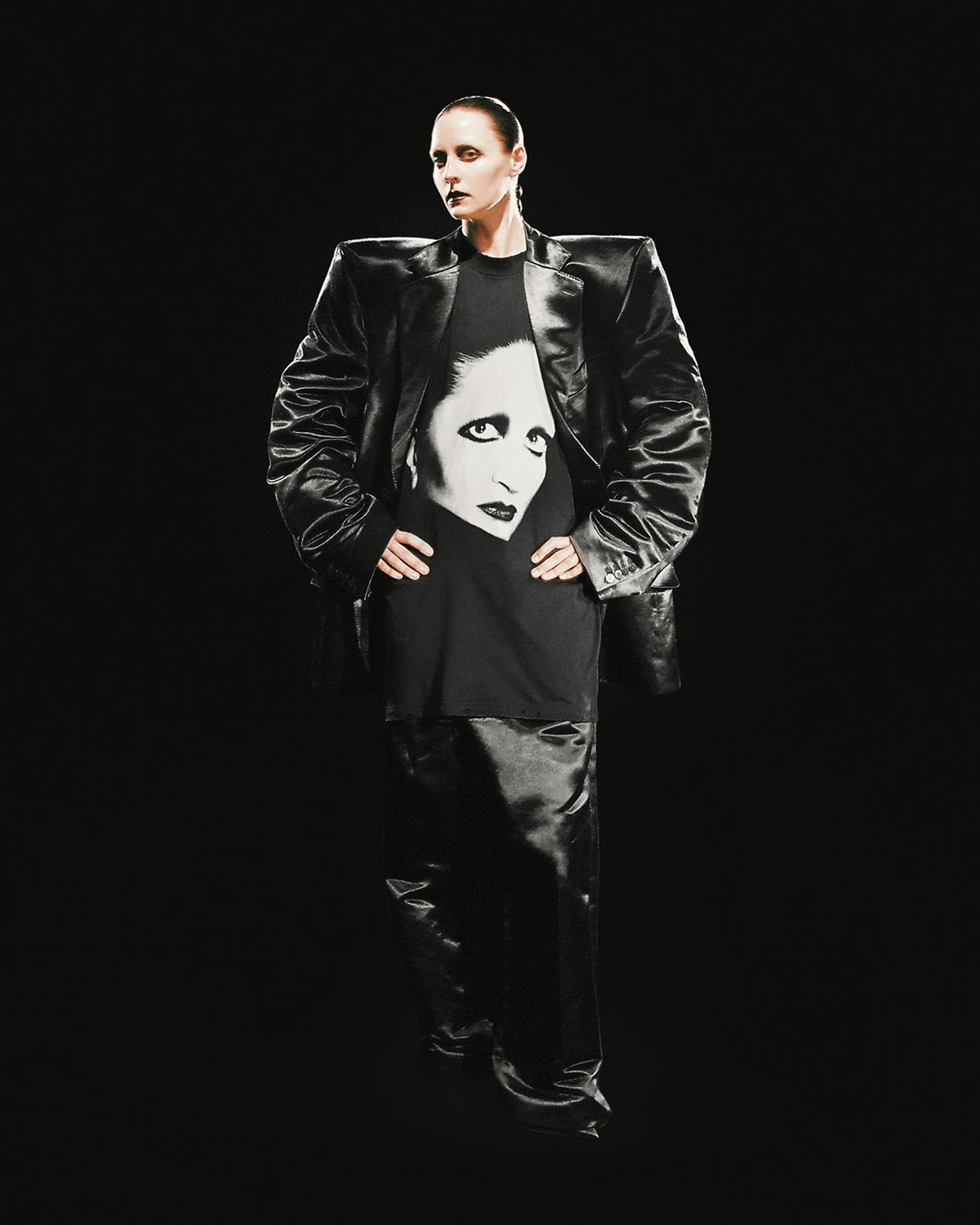
Mina and Balenciaga have much in common
Balenciaga Music | Mina Series. A parallel between two seemingly distinct artistic paths: Mina and Don Cristóbal both lived uncompromising lives in pursuit of abstraction
Balenciaga Music | Mina Series – Demna Gvasalia and the connection between Mina Mazzini and Don Cristóbal Balenciaga
Demna Gvasalia seems to have grasped much of the Maison’s founder’s personality. This is evident in his most recent project – Balenciaga Music | Mina Series – dominated by the immense shadow and fluid voice of Mina. There’s an affinity that blends with the mystique of the genius misanthrope Balenciaga, who remains the foundational force behind the brand.
What do Mina and Balenciaga have in common? – Music and fashion, the search for abstraction.
Mina became an icon in music but also influenced fashion in the 1960s. This was a time when Cristóbal Balenciaga reached creative peaks that remain impossible to emulate. Both sought abstraction and incorporation. Demna Gvasalia has often cleverly retraced the tension that pervaded Balenciaga’s final creative period – the obsession with geometry before the curtain fell in 1968 and his definitive retirement to the Basque Country. Unlike many trivial exercises in recent fashion, Gvasalia has masteried the sharp language of haute couture. He has reinterpreted the challenging vocabulary and shaken up Don Cristóbal’s rules.
Mina, self-exiled to an impenetrable bourgeois dimension in Lugano, Switzerland, refused direct contact with the public. Yet, her voice triumphs and pierces through every screen, shattering the protective bulwark of normality and filling an empty stage.
Demna Gvasalia discovered Mina by chance in 2011, hearing her on the radio while dining at a restaurant in Veneto.
Mina captivates listeners just as she did when she dominated the stage or the black-and-white television screens. Her voice has evolved, but remains unmistakable, perhaps more evocative, rough, and romantic. Consider Luna Diamante, a nocturnal song that graced a recent Ozpetek film. As Gvasalia observes, Mina’s repertoire captures pivotal moments in our lives.
“Before I realized it, I became obsessed. I immersed myself in her live performances, her albums… She was simply the right performer for that period of my life, during which I sought a means in music to express the melancholy and sadness I felt after a relationship ended.”
He’s certainly not the only one to find resonance in Mina’s love songs. There’s one for every emotional nuance, the right key to every relationship moment, happy or desperate, from falling in love to abandonment. It’s mutual admiration, as confirmed by Massimiliano Pani, Mina’s son. She finds Gvasalia’s work bold and pioneering – qualities she probably sees in herself. She immediately accepted the idea to collaborate on this Balenciaga initiative, which pays homage to her career and personality.
Demna reinterprets the roots and aesthetic challenges of a brand that closed its doors as the barricades of the May 1968 French protests rose, by the will of the one who created and nurtured it from its beginnings in Spain, and especially since its powerful emergence in experimental, hostile Paris in 1938.

Mina Mazzini flirted with her image and fashion playfully
Mina Mazzini flirted with her image and fashion amusingly, never taking herself too seriously. She certainly wasn’t a slave to tailors or stylists. After her rockabilly debut, she stubbornly imposed a thousand different inspirations, culminating in a sophisticated evening glam style from the early 1960s onwards.
Mina always refused to take off her good-luck charm necklaces, even when they clashed with her overall look.
Mina is draped in textile volume. Her signature braid springs from her head, her blonde hair pulled tight. Her eyes are framed by Eastern seer kohl. The latest chapter in this fashion skirmish, before the joint venture with Balenciaga, was the remix of Ancora, re-edited by Mark Ronson. This remix became a hit during Sabato De Sarno’s debut show at Gucci. When the song was released in 1978, it sparked a scandal, censorship intervened, and many radio stations refused to play it. Mina was no stranger to such provocations. Her career is peppered with episodes like this.
Balenciaga Music | Mina Series
The unprecedented duo stars in the capsule collection Balenciaga Music | Mina Series, available September 19, 2024. The news was shared through a conversation between the Georgian fashion designer and Massimiliano Pani, Mina’s eldest son and producer of her albums. Alongside the capsule, Mina has curated a playlist of 50 songs. On the same date, L’amore vero, a single from her upcoming November album, will be pre-released in a limited edition. This marks the first time Mina has officially collaborated with a fashion house on a merchandising project. She has also released upcoming music in partnership with a brand.
The capsule includes a limited-edition t-shirt featuring the singer’s face and, on the back, the complete list of her 106 albums (excluding compilations). The t-shirt’s label, explained Gvasalia, will contain an NFC chip (Near Field Communications), which, when activated by a compatible device, will unlock the track L’amore vero. There is also sunglasses, with lens shapes inspired by Mina’s makeup. The singer’s signature is laser-engraved inside, along with a QR code linking to the track.
Mina and fashion: clothes didn’t interest her, said Mila Schön, yet she remains a reference
Mila Schön often dressed Mina during the golden age of the 1960s, and she claimed Mina didn’t care about the clothes she wore. She was so immersed in her music and world that fashion was irrelevant. Yet, Mina remains a reference in fashion, with a constant ability to reinvent herself experimentally.
Mina, also known as Mina Anna Mazzini, was born in Busto Arsizio on March 25, 1940
Totemic and full of meaning, a catalyst for symbolic and dreamlike aspects, messages, and universal omens – she was called the Tigress. In pop and camp contexts, Mina creates her own semantics. She is the sorceress with fluid, abstract, and elusive motion in the air. She is a play of mirrors and an allegorical spell of sincerity and mystification. Mina, alias Mina Anna Mazzini. Lombard, born in Busto Arsizio on March 25, 1940. Singer, TV host, actress, and record producer – read the latest encyclopedia. Roaring dance halls in the late 1950s, as the economic boom exploded.
Thanks to her voice, Mina has navigated half a century of Italian history. Even hidden behind the curtains of impenetrable privacy, she continues to exercise regal dominance over the entire country. Mina is, in a prophetic oxymoron, both the seal and the antithesis of Italy and its endless contradictions. Popular and sophisticated, romantic and feminist. Free, indifferent to clichés and respectability, she combines provocation and independence, metamorphosis, and a thrust toward the future. Paradoxally, she is both a bourgeois lady with a placid domestic vocation and a brilliant brat girl.
Mina: Gay icon and fashion inspiration. She turned down an international career by saying no to Frank Sinatra, who wanted her in America
Rebellious, byzantine, and a gay icon. Tireless. An inspiration for fashion, in a black fourreau and gold chain, she performed on stage until reaching catharsis and self-consumption, perhaps ultimately capricious and lazy. She turned down an international career, saying no to Frank Sinatra, who wanted her in America (reportedly due to her invincible fear of airplanes). Omnivorous in her repertoire. Polyglot, she recorded albums in Spanish, Portuguese, English, Turkish, and Japanese. Her gallery of successes never ends. Her discography is shattered into a thousand reflections and seductions, unlocking rows filled with memories and emotions. Sentimental and melodramatic. Full of suggestions and questions. Both real and fictional.
Mina, success, and retirement from the stage
Mina has devoted herself to the life of a normal woman, but in doing so, she has given herself to a mythological aura. In 1978, like a modern-day Greta Garbo, she withdrew from the stage, hiding behind the heavy purple curtains of her own legend.
Cesare Cunaccia








